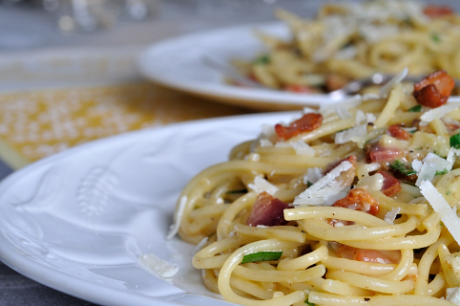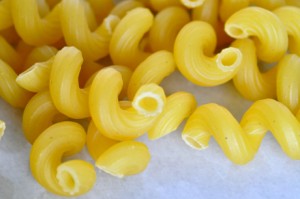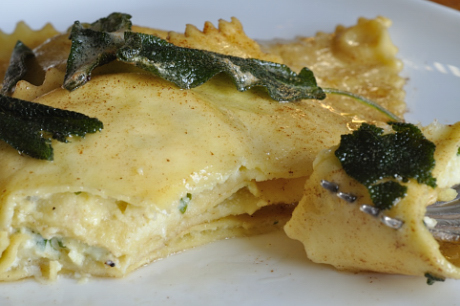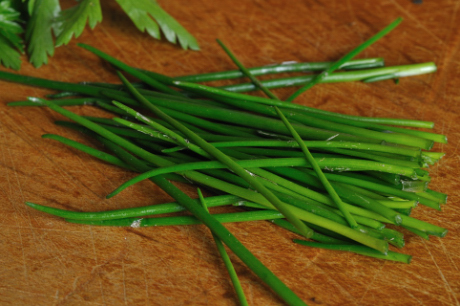
I’ve recently experienced an epiphany. I love cooking for two.
After so many years of cooking for a houseful, I’m enjoying cooking for only two with no leftovers to wrap up and refrigerate. You know the drill. Despite your best intentions, those guilty leftovers in the back of your fridge are often tossed when you no longer recognize them. So, I’m saving money and wasting less food, which is great. But the second aspect of my inspiration is cooking up an entire meal for two in one pan because, like most of you, I really love to cook because I really love to eat. But I hate to clean up.
So, I’m offering you, forthwith, a meal sure to warm the cockles of your heart on these chilly winter nights; one pan pasta carbonara. This classic dish is rich, garlicky, smoky, salty and cheesy…the epitome of comfort food. The eggy sauce thickens just enough when tossed with the hot pasta, crispy bacon and nutty Parmesan. Though pasta carbonara isn’t exactly health food, I believe that everyone could use a heaping helping of carbohydrate comfort on a regular basis, especially when a recipe is this simple. You decide whether you need it monthly, weekly or daily. I’m not here to judge.
Even with a kitchen full of lovely pots and pans, you’ll appreciate this recipe’s one pan status and the time it saves you to do other more important things…like having epiphanies.
Kitchen Counter Point: Good cheese is a real shortcut to the best flavor, but that often means you must buy a chunk and grate it yourself. If you feel like investing and discovering the best flavored cheese, you’ll find it in individually wrapped chunks in the cheese bin section at your grocery. Real Parmesan Reggiano has a dot matrix design on the rind. Look for a chunk with only one side of the rind (that hard inedible outer covering) attached for the best bang for your buck.
2 large eggs, beaten
1/4 teaspoon plus1 tablespoon salt, divided
Freshly ground black pepper to taste
1/2 cup freshly grated Parmesan Reggiano or pecorino Romano cheese
2 teaspoons minced fresh parsley, plus more for garnish (optional)
1/2 pound dried spaghetti noodles, snapped in half lengthwise
4 strips bacon, chopped
2 cloves garlic, minced
Fill a large pot with about 3 quarts of water and bring it to a boil, covered, over high heat. It will take about 15 minutes. While the water heats, prepare the ingredients so you can work quickly. Combine the eggs, 1/4 teaspoon salt, pepper to taste, Parmesan and parsley, if using, in a medium bowl. Set aside.
When the water boils add the tablespoon salt and the pasta to the pot. Stir once or twice to keep the pasta from sticking and cook the pasta for a minute or so less than directed on the package. Test the pasta by fishing out a piece and cutting it in half. You should see a small dot of uncooked pasta in the center. The pasta will finish cooking with the sauce.
Reserve 2 tablespoons of the pasta water and add it to the egg mixture. Drain the pasta in a strainer.
Working quickly, return the hot pot to the heat and add the chopped bacon. Cook the bacon until it is crispy, about 5 minutes. Transfer the bacon to the egg mixture and remove the pot from the heat.
Add the garlic to the pot and cook it in the hot bacon fat for about 10 seconds or until it is fragrant. Return the drained pasta to the pot and toss it in the hot bacon fat for about 30 seconds to reheat it. Quickly pour in the egg mixture and toss to blend the ingredients thoroughly. The egg should thicken into a sauce. Taste for seasoning and add more salt and pepper to taste.
Heap the pasta onto two heated plates and garnish with extra parsley if using.
I like to drink Italian wine with Italian food and this classic pasta would taste great with a medium bodied Chianti. Look for Riserva on the label as it generally denotes a higher quality.




 There’s one specific noodle that I find particularly tempting. It’s a little hollow corkscrew shape called cellentani. Barilla makes it so it should be easy for you to find. It has the most seductive spring and chewy bite… I just can’t get enough of it.
There’s one specific noodle that I find particularly tempting. It’s a little hollow corkscrew shape called cellentani. Barilla makes it so it should be easy for you to find. It has the most seductive spring and chewy bite… I just can’t get enough of it.












